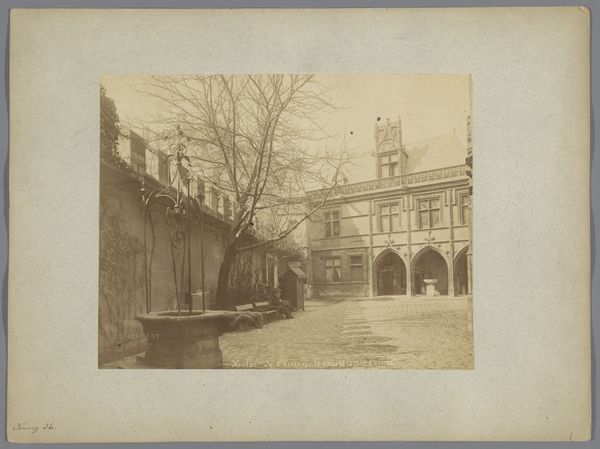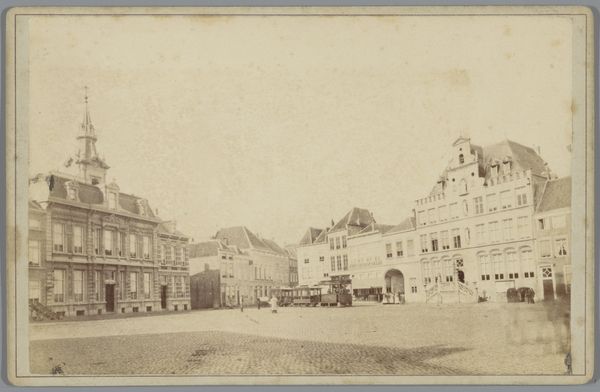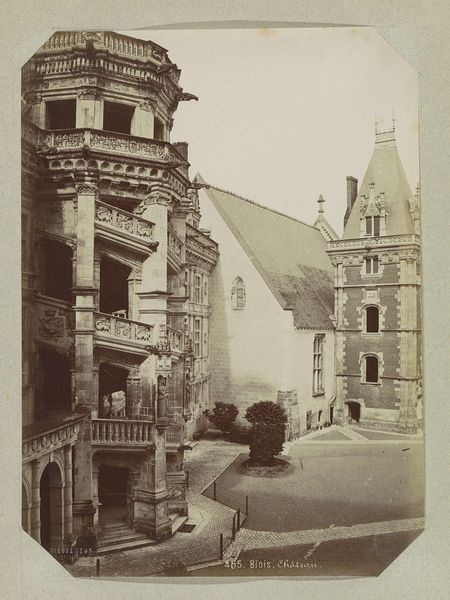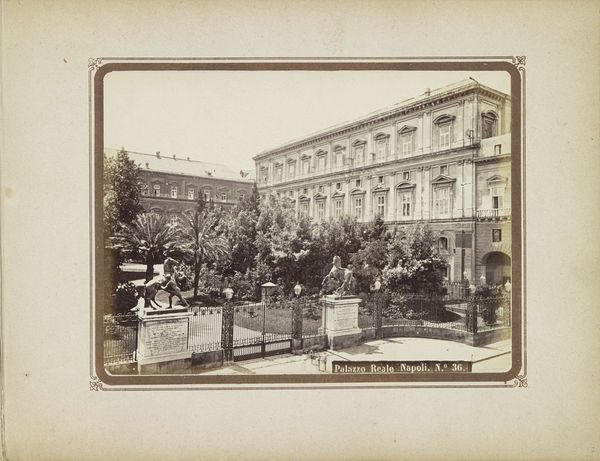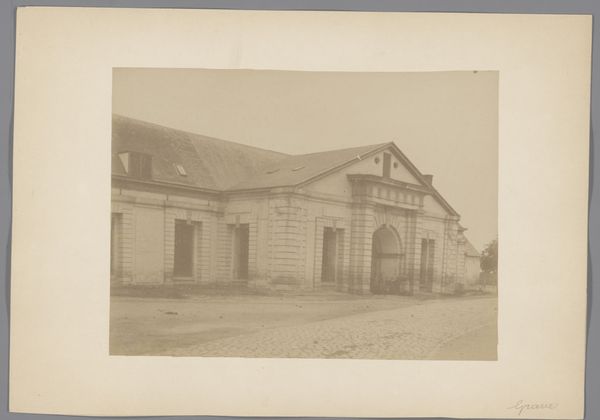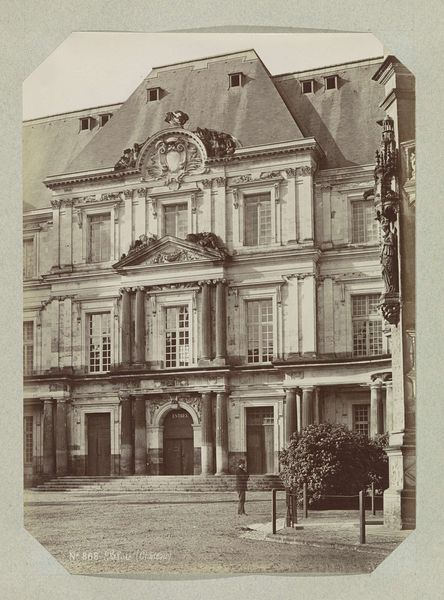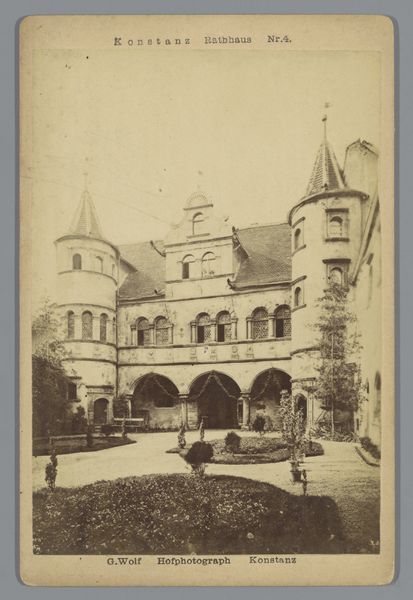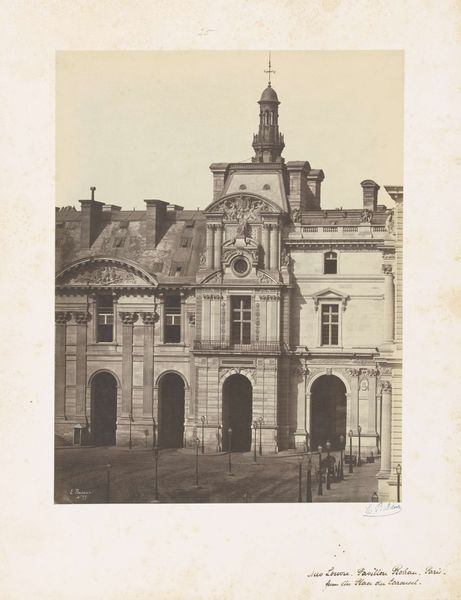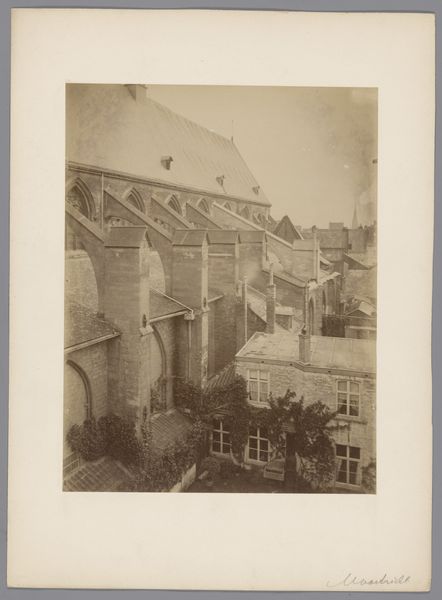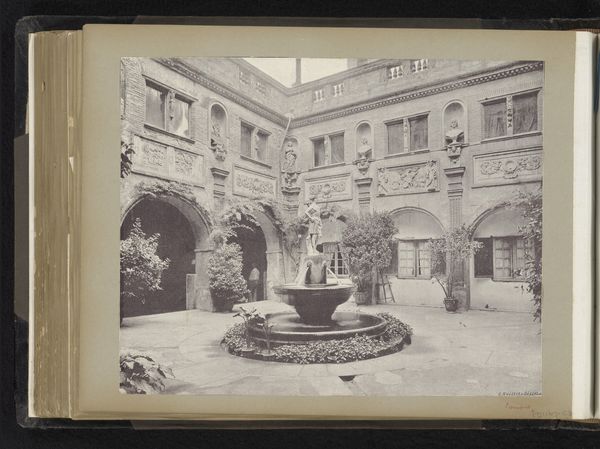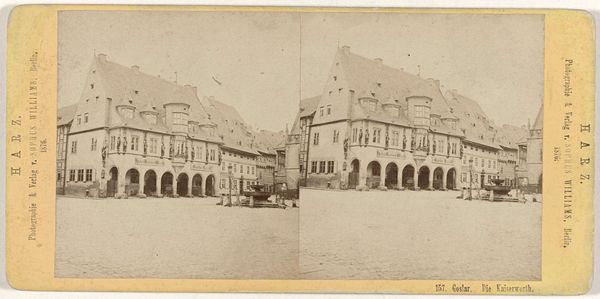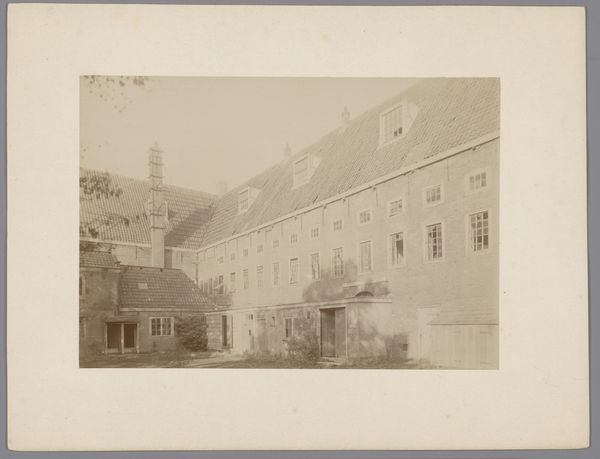
print, photography, architecture
# print
#
landscape
#
photography
#
historical photography
#
cityscape
#
architecture
#
realism
Dimensions: height 180 mm, width 220 mm
Copyright: Rijks Museum: Open Domain
Curator: Eugène Atget's photograph, "Binnenplaats van het Hôtel d'Ambrun aan de Quai de Béthune, Parijs," created sometime between 1890 and 1925, presents a serene yet imposing courtyard. Editor: My first impression is of muted grandeur, a study in grays and creams. The courtyard's design speaks of structured elegance, though a melancholic mood hangs in the air, wouldn’t you agree? Curator: Indeed. Notice the way Atget uses light. It's not harsh, but evenly distributed, illuminating the architectural details - the arches, the subtle ornamentation, the cobblestone paving. These elements suggest a society valuing order and permanence. Editor: And that order, as you note, has a history. This courtyard speaks of aristocratic wealth and privilege, now fading into a more democratic age. It also hints at the role of photography in preserving this history and making it accessible. Curator: Consider also the composition. The placement of the statue and the fountain creates a central point, yet the gaze is drawn towards the perimeter by the arches, expanding and framing the courtyard within its structural embrace. This evokes feelings of containment and security. Editor: The subject matter too plays into our understanding of the era. Atget meticulously documented pre-modern Paris. His photographs become a sociological record of urban transformations driven by modernity. Here we have an idealized glimpse into what’s on the cusp of being swept away. Curator: The textural qualities are quite noteworthy. The stark geometry of the architecture juxtaposes with the fluid shapes of the plants. He plays order against growth so deliberately and masterfully. Editor: True. Atget seems to capture not just an image, but also a historical moment fraught with implications about class, urbanization, and representation. Curator: Precisely. This study of contrasts extends to the technical aspects; the sharpness in focus allows one to notice every surface blemish alongside structural forms which allows him to emphasize, again, time passing within a static space. Editor: A moment frozen, a narrative silently unfolded within the formal framework of light, lines, and architectural mass. A history etched into an image, ready to be reactivated with our looking. Curator: Yes, indeed, and a superb example of how a photograph can convey more than just surface appearances. Editor: And the photographic medium transforms private experience into social observation.
Comments
No comments
Be the first to comment and join the conversation on the ultimate creative platform.
